Poverty, a complex social phenomenon, remains a pressing global issue with far-reaching implications. While the concept of poverty is widely understood, its underlying causes and varied manifestations require a closer examination. Factors such as economic disparities, political instability, and systemic inequalities contribute to the persistence of poverty worldwide. Understanding the intricate web of reasons behind poverty is crucial for formulating effective interventions and policies aimed at eradicating this pervasive problem. As we delve into the depths of poverty's origins, we uncover a tapestry of interconnected elements that demand our attention and collective efforts to unravel and address comprehensively.
Key Takeaways
- Poverty is a societal condition lacking essential resources for basic human needs.
- Challenges include inadequate access to food, shelter, healthcare, education, and sanitation.
- Poverty encompasses social exclusion and limited capabilities.
- Policymakers can create strategies to alleviate poverty and promote growth.
Definition of Poverty

Poverty is a multifaceted societal condition characterized by a lack of access to essential resources necessary for meeting basic human needs. The World Bank defines poverty based on the international poverty line, currently set at $2.15 per day to measure extreme poverty globally. This deprivation goes beyond just the lack of income; it encompasses a wide range of challenges, including inadequate access to food, shelter, healthcare, education, transportation, and sanitation. Children living in poverty often face significant barriers to accessing quality education and healthcare, which can have long-lasting effects on their development and future opportunities. The concept of poverty extends beyond mere material possessions and delves into the realm of social exclusion and limited capabilities. Understanding poverty requires a holistic view that considers both absolute deprivation in meeting basic needs and relative measures that evaluate access to essential services and opportunities.
Absolute Vs. Relative Poverty
Absolute poverty is characterized by a lack of income to meet basic needs, like food and shelter, while relative poverty compares one's income to the median within a society. Understanding the distinctions between these two forms of poverty is essential for developing targeted interventions that address the specific challenges faced by individuals in different economic contexts. By examining both absolute and relative poverty, policymakers can create comprehensive strategies to alleviate poverty and promote equitable economic growth.
Defining Poverty Types
Frequently overlooked in discussions of socioeconomic disparity, the distinction between absolute and relative poverty is crucial for understanding the multifaceted nature of economic hardship. Absolute poverty is characterized by the inability to afford basic necessities like food and shelter, often measured by a specific income threshold, such as $2.15 per day. On the other hand, relative poverty is defined by income levels below a certain percentage of the median income in a given country, highlighting disparities within societies. The table below summarizes the key differences between absolute and relative poverty:
| Criteria | Absolute Poverty | Relative Poverty |
|---|---|---|
| Definition | Inability to afford basic needs like food, shelter | Income levels below a % of median income |
| Focus | Meeting basic needs | Income inequality and social exclusion |
| Measurement | Specific income threshold (e.g., $2.15 per day) | Percentage of median income |
| Global Benchmark | World Bank's international poverty line | Country-specific |
| Policy Implications | Targeted interventions for basic needs | Addressing income disparities |
Comparing Poverty Levels
Often overlooked in socioeconomic analyses, the comparison of poverty levels through the lenses of absolute and relative measures reveals distinct perspectives on economic hardship and societal disparities. Absolute poverty is living on less than $2.15 per day, a globally recognized threshold for extreme deprivation, while relative poverty is based on a percentage of median income, highlighting disparities within societies. The distinction between absolute and relative poverty helps in understanding varying levels of deprivation, with absolute poverty focusing on meeting basic needs and relative poverty considering income inequality. Both measurements provide insights into socio-economic challenges and disparities, shedding light on the complexities of global poverty and the impacts of income inequality on individuals and societies.
Impact on Individuals
The impact of poverty on individuals varies significantly depending on whether it is measured in absolute terms, focusing on basic needs, or in relative terms, considering income inequality within a society. Absolute poverty, characterized by the inability to afford necessities like food and shelter, directly affects individuals' access to essential services such as healthcare and education. In contrast, relative poverty, determined by income falling below a country's median threshold, highlights disparities within a society. Children in absolute poverty often struggle with severe deprivation, while those in relative poverty may face challenges due to societal comparisons. Tailoring intervention strategies that address these distinct aspects of poverty is crucial in mitigating its adverse effects on individuals and promoting sustainable well-being.
Non-Monetary Aspects of Poverty
Numerous critical non-monetary factors contribute to the complexity of poverty, including lack of access to essential resources such as clean water, sanitation, and healthcare. These factors intertwine with social and environmental challenges, further deepening the cycle of poverty.
- Poor education quality and limited opportunities hinder individuals from breaking the poverty cycle, as education is a key determinant of future success and economic stability.
- Social exclusion, discrimination, and limited social support networks isolate individuals living in poverty, making it challenging to access opportunities for growth and development.
- Environmental challenges like climate change disproportionately affect vulnerable populations in poverty, leading to increased health risks, food insecurity, and displacement.
Understanding these non-monetary aspects of poverty is crucial for devising effective interventions and policies to address the multidimensional nature of poverty and uplift those affected by its grasp. By targeting these factors, societies can work towards creating a more equitable and sustainable future for all.
Global Poverty Hotspots
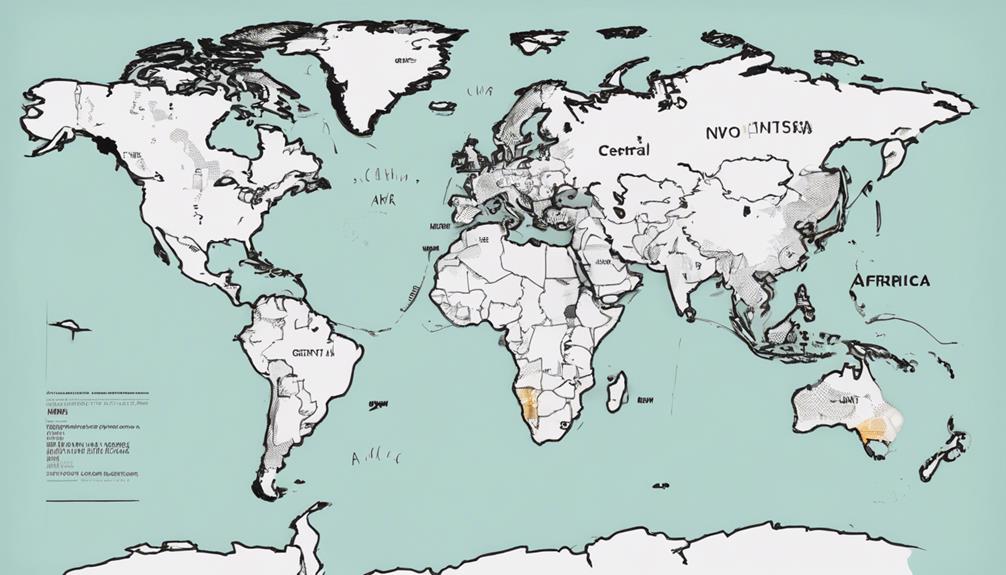
Global poverty hotspots like Africa and Asia harbor millions of individuals struggling with extreme poverty, demanding urgent attention and effective solutions. With Nigeria, the Democratic Republic of Congo, and South America facing significant poverty challenges, targeted interventions and poverty reduction strategies are essential to alleviate the suffering of millions. Understanding the specific dynamics of poverty in these regions is crucial for implementing impactful initiatives and fostering sustainable development.
Poverty in Africa
In the context of global poverty hotspots, Africa stands out with a staggering 430.3 million individuals grappling with extreme poverty, predominantly concentrated in regions like Sub-Saharan Africa. This dire situation is further exacerbated by factors such as conflict, corruption, and lack of infrastructure, which impede development efforts in countries like Nigeria and the Democratic Republic of Congo. Despite the continent's abundant natural resources, economic challenges and inequality persist, contributing to the high poverty rates. Organizations like World Vision actively engage in community development programs and aid initiatives to combat poverty in Africa.
- Sub-Saharan Africa is particularly affected by extreme poverty.
- Conflict, corruption, and lack of infrastructure hinder development efforts.
- Economic challenges and inequality contribute to high poverty rates.
Addressing Poverty Solutions
Efforts to combat poverty in global hotspots require strategic interventions tailored to address the specific challenges faced by vulnerable populations. India, with 44 million people living in extreme poverty, stands out as a key focus for poverty alleviation efforts. Targeted interventions in regions like Somalia, where severe droughts worsen poverty, are urgently needed to make a significant impact. Organizations such as World Vision play a crucial role in providing aid to poverty-stricken areas, offering support and resources to tackle the complex issues faced by vulnerable populations. By implementing tailored solutions that address the unique circumstances of each hotspot, progress can be made towards reducing extreme poverty and improving the lives of those most in need.
| Global Poverty Hotspots | Population in Extreme Poverty (millions) |
|---|---|
| Nigeria | 71 |
| Democratic Republic of Congo | 68 |
| India | 44 |
| Somalia | – |
| Worldwide | 700 |
Poorest Countries Worldwide
Challenged by pervasive poverty and limited resources, the poorest countries worldwide struggle to achieve sustainable economic development and alleviate extreme poverty. South Sudan, Burundi, and Malawi face high levels of extreme poverty, hindering their progress towards economic stability. Similarly, Niger, Mozambique, and Liberia encounter significant obstacles in their efforts to promote economic growth and reduce poverty rates. These nations grapple with a range of challenges, including inadequate infrastructure, limited access to education and healthcare, and political instability, all of which contribute to their ongoing struggle with poverty. Despite some international aid and development efforts, the cycle of poverty persists in these regions, impacting the lives of millions of people and impeding overall progress. Efforts to address the root causes of poverty in these countries must be comprehensive and sustained, focusing on empowering communities, enhancing education and healthcare systems, and fostering economic opportunities for sustainable development.
Children Living in Poverty

Amidst the pervasive challenges faced by the poorest countries worldwide in their struggle against poverty, a particularly vulnerable group requiring urgent attention and intervention is children living in impoverished conditions. Children in poverty are disproportionately affected by malnutrition, illness, and lack of access to education. It is alarming that approximately 385 million children globally live in extreme poverty, deprived of essentials necessary for healthy development. The detrimental effects of poverty on children extend beyond physical health, hindering their cognitive and emotional growth and limiting their future opportunities. Moreover, the absence of proper healthcare and nutrition in impoverished areas contributes to elevated child mortality rates, highlighting the urgent need for targeted interventions. Children living in poverty also encounter social exclusion, stigma, and significant barriers that impede their ability to reach their full potential. Addressing the multifaceted challenges faced by these vulnerable children is crucial in breaking the cycle of poverty and promoting a brighter future for generations to come.
Impact of Poverty on Children
Children living in poverty face a myriad of challenges that significantly impact their overall well-being and future prospects. The impact of poverty on children is profound and multifaceted, affecting various aspects of their lives.
- Malnutrition: Children in poverty are more likely to experience malnutrition due to inadequate access to nutritious food. This can lead to long-term health issues and hinder their physical development.
- Education: Poverty often limits children's access to quality education, impacting their cognitive abilities and academic performance. The lack of essential resources like books and technology further exacerbates the educational disparities.
- Healthcare: Children living in poverty face challenges in accessing adequate healthcare services, increasing their vulnerability to diseases and infections. The lack of proper medical care can have long-term implications on their overall health and well-being.
These factors collectively contribute to the cycle of poverty, making it difficult for children to break free from its grip and achieve their full potential. Addressing these challenges is crucial for ensuring the holistic development of children living in poverty.
Strategies to Reduce Poverty
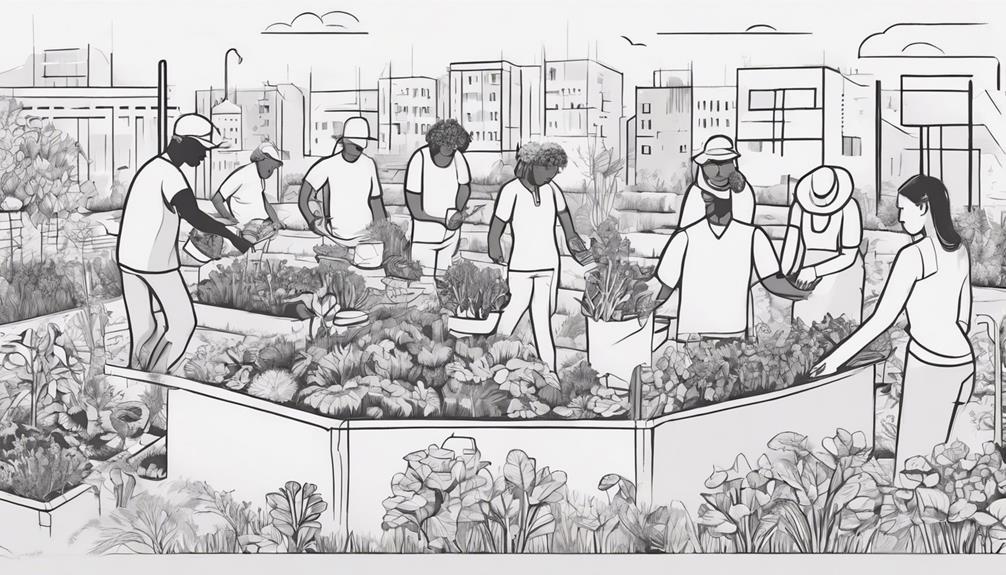
Efforts to reduce poverty must prioritize job training programs to enhance employability, access to quality education to equip individuals with necessary skills, and microfinance initiatives to enable entrepreneurship among marginalized communities. These strategies are essential for fostering economic independence and breaking the cycle of poverty by providing individuals with the tools to secure sustainable livelihoods. By addressing these key areas, societies can work towards creating a more equitable and prosperous future for all members.
Job Training Programs
Job training programs play a crucial role in equipping individuals with the necessary skills and knowledge to enhance their employability and break the cycle of poverty. These programs are designed to address the specific skills needed in various industries, aiming to reduce unemployment rates and provide practical education. Key points to consider about job training programs include:
- Tailoring curriculum to meet local job market demands
- Increasing job opportunities and earning potential for participants
- Focusing on specific industries or job sectors to align with workforce needs
Access to Education
Access to quality education stands as a fundamental pillar in combatting poverty on a global scale, serving as a key strategy to empower individuals with the necessary tools to break free from socioeconomic constraints. Quality education equips individuals with essential skills and knowledge, enabling them to access higher income levels and improve their quality of life. Lack of education often limits opportunities for economic advancement and social mobility, trapping individuals in poverty cycles. Investing in education yields long-term benefits by empowering individuals to secure better jobs, ultimately contributing to poverty reduction efforts. The table below highlights the significance of access to education in reducing poverty levels:
| Key Points | |
|---|---|
| Empowers individuals | Breaks poverty cycles |
| Enhances economic mobility | Secures better jobs |
| Enables social advancement | Improves quality of life |
Microfinance Initiatives
The pursuit of poverty reduction through targeted financial empowerment strategies has led to the emergence and widespread adoption of microfinance initiatives, particularly in providing small loans and financial services to low-income individuals and entrepreneurs. Microfinance initiatives play a crucial role in promoting financial inclusion and catalyzing economic development in underserved communities. Here are three key aspects of microfinance initiatives:
- Empowering Entrepreneurs: By offering small loans, microfinance enables individuals to start or expand small businesses, fostering economic growth.
- Enhancing Livelihoods: These initiatives help generate income for low-income individuals, leading to an improvement in their quality of life.
- Promoting Inclusivity: Microfinance institutions target marginalized groups, such as women, who lack access to traditional banking services, thus promoting financial inclusion.
World Vision's Anti-Poverty Efforts
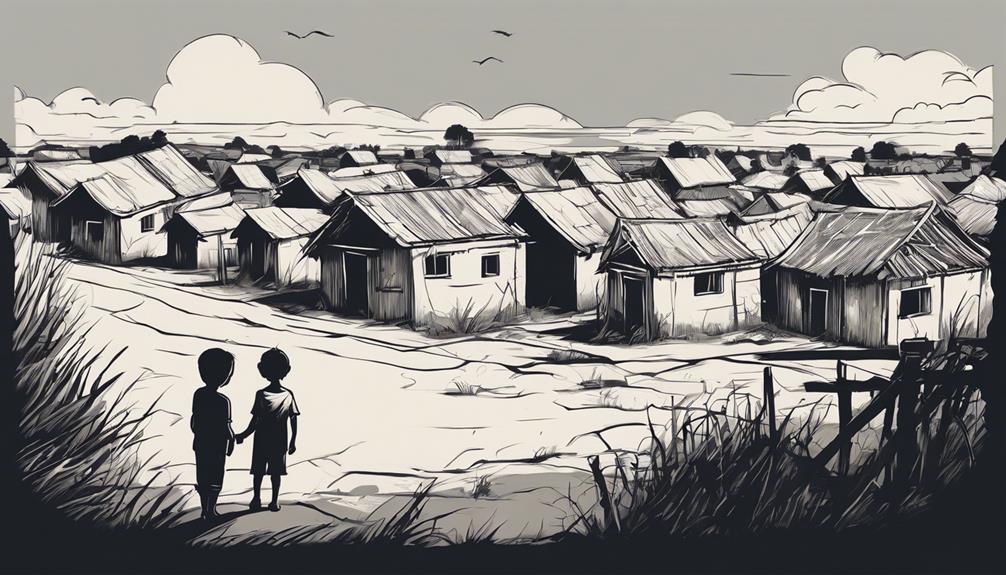
World Vision's comprehensive initiatives targeting poverty have significantly impacted millions of children worldwide through their child sponsorship programs and community development projects. Their child sponsorship programs have benefited over 3.5 million children living in poverty, while their Area Development Programs have brought positive changes to communities over 10-15 years. One key aspect of World Vision's efforts is the contribution to educational advancements in sponsored communities, providing children with access to education and learning opportunities. Moreover, World Vision plays a crucial role in supporting children in conflict zones, offering them protection and assistance in challenging circumstances. To facilitate communication between sponsored children and sponsors, World Vision employs innovative methods that bridge any language or cultural barriers effectively.
| Category | Impact | Details |
|---|---|---|
| Child Sponsorship | Benefiting over 3.5 million children | Providing access to education and essential resources |
| Community Development | Positive impact over 10-15 years | Sustainable changes in communities through development projects |
| Educational Advancements | Contribution to learning opportunities | Empowering children through education in sponsored communities |
| Conflict Zones | Direct support for children | Providing protection and assistance in areas affected by conflict |
Effectiveness of Child Sponsorship
Efforts to evaluate the effectiveness of child sponsorship programs have yielded valuable insights into their impact on children and communities. Child sponsorship programs, such as World Vision, have demonstrated significant progress in improving the lives of children and communities. Key findings suggest that long-term Area Development Programs lasting 10-15 years play a crucial role in yielding positive outcomes in sponsored communities. These initiatives not only contribute to educational advancements but also create opportunities for children living in poverty to access education. Moreover, child sponsorship programs, especially in conflict zones, provide essential support and protection for vulnerable children. Communication barriers between sponsored children and sponsors are effectively overcome through various channels and means, ensuring meaningful connections that benefit both parties involved. Through targeted interventions and sustained support, child sponsorship programs have been instrumental in bringing about positive changes in the lives of children and communities facing adversity.
Causes of Global Poverty

Lack of access to fundamental resources and opportunities perpetuates the cycle of global poverty, stemming from a complex interplay of socio-economic factors. Causes of global poverty include economic inequality, discrimination, and inadequate social safety nets.
| Causes of Global Poverty |
|---|
| Lack of Access to Education |
| Economic Inequality |
| Discrimination Based on Gender, Ethnicity, and Social Status |
Global poverty is exacerbated by the lack of access to essential services such as education, healthcare, clean water, and employment opportunities. Inadequate infrastructure, political instability, and economic inequality also play significant roles in perpetuating poverty. Furthermore, climate change, natural disasters, and conflicts displace populations and exacerbate poverty conditions worldwide. Discrimination based on gender, ethnicity, and social status further entrenches individuals and communities in poverty. Limited financial inclusion, lack of social safety nets, and weak governance systems pose additional challenges in addressing global poverty effectively. Understanding these root causes is crucial in developing sustainable solutions to break the cycle of poverty and promote global development.
Breaking the Poverty Cycle
Addressing the foundational barriers to education, healthcare, and economic opportunities is paramount in breaking the cycle of poverty. Sustainable interventions such as skills training and job creation programs are essential components in empowering individuals to uplift themselves from poverty. Access to education not only equips individuals with knowledge and skills but also opens doors to better employment opportunities. Similarly, access to healthcare ensures a healthy and productive workforce, breaking the cycle of poverty caused by illness and high medical expenses. Additionally, creating economic opportunities through initiatives like microfinance and savings programs enables individuals to build assets and generate income, thereby breaking free from the constraints of poverty.
- Skills training and job creation programs
- Access to education for better opportunities
- Empowerment through economic opportunities
These interventions, combined with the establishment of social support networks and community collaborations, play a vital role in breaking the intergenerational cycle of poverty. By providing comprehensive support that addresses not only economic needs but also mental health, addiction, and family issues, societies can effectively break the poverty cycle and create a path towards sustainable development.
Progress in Poverty Reduction
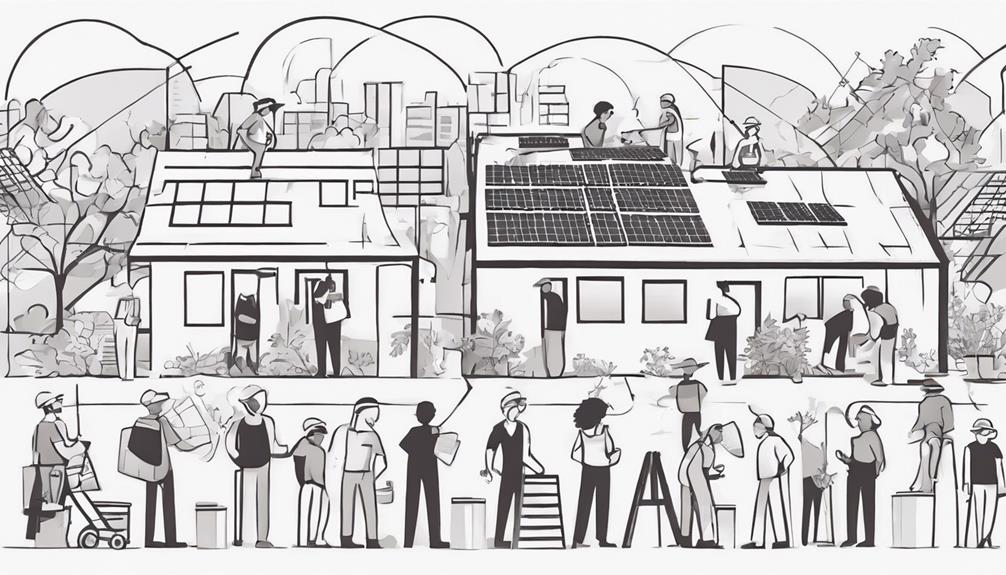
Building on the sustainable interventions and community collaborations discussed in breaking the poverty cycle, significant progress in poverty reduction has been observed through targeted programs and initiatives. Child sponsorship programs, exemplified by organizations like World Vision, have played a crucial role in poverty reduction by focusing on community development and long-term outcomes. Area Development Programs, spanning 10-15 years, have shown positive results in alleviating poverty by addressing various facets of community well-being. Educational advancements have been a key outcome of child sponsorship initiatives, leading to improved opportunities and overall quality of life for sponsored children and their communities. Moreover, organizations like World Vision have been actively involved in supporting children in conflict zones, providing essential resources and protection. Effective communication strategies have also been employed to bridge the gap between sponsored children and their sponsors, ensuring better engagement and support for sustainable poverty reduction efforts. Through these targeted approaches, progress in poverty reduction has been tangible, highlighting the importance of strategic interventions in combating poverty.
Sustainable Development Goals and Poverty
Sustainable Development Goal 1 sets a clear target to eradicate poverty by 2030, highlighting the urgency of addressing this global issue. With over 700 million people still living in extreme poverty, the need for effective poverty reduction strategies is paramount. Understanding the impact of poverty on various aspects of society, particularly women and children, is crucial for achieving sustainable development goals.
Ending Poverty Through SDGs
The global endeavor to eliminate poverty by 2030 through the implementation of Sustainable Development Goals (SDGs) is a multifaceted initiative addressing the various dimensions of deprivation.
- SDGs aim to eradicate extreme poverty worldwide by 2030.
- SDG 1 targets those living on less than $1.90 a day.
- The comprehensive approach of SDGs recognizes poverty's multidimensional nature, including education, healthcare, and access to resources.
Through these goals, efforts are made to reduce poverty levels by half according to national definitions, focusing on uplifting vulnerable populations. Achieving these targets demands a holistic strategy encompassing economic, social, and environmental dimensions to ensure sustainable progress towards poverty eradication.
Impact of Poverty Reduction
Efforts to reduce poverty through the implementation of Sustainable Development Goals (SDGs) have demonstrated significant impact on various societal dimensions. By lowering poverty rates, these initiatives contribute to fostering social inclusion, promoting economic growth, and uplifting marginalized communities. The reduction of poverty not only addresses immediate financial needs but also plays a crucial role in sustainable development by creating opportunities for vulnerable populations. It helps in building more resilient societies, reducing inequalities, and enhancing overall well-being. Effective poverty reduction strategies go beyond monetary assistance, focusing on empowering individuals, enhancing access to resources, and fostering economic stability. The success of poverty reduction programs is essential for achieving a more equitable and sustainable future for all, aligning with the broader objectives of the SDGs.
Eradication of Poverty Timeline
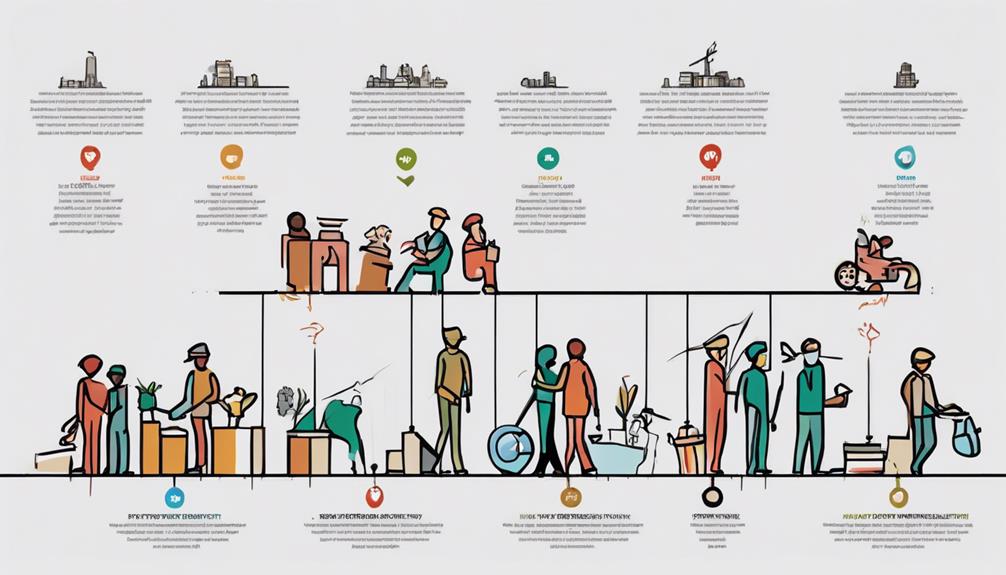
Initiating a structured timeline for the eradication of poverty necessitates strategic coordination across multiple levels of governance and society. Efforts to eradicate extreme poverty by 2030, as outlined in Sustainable Development Goal 1, have shown progress with a decrease from 36% in 1990 to 8.6% of the global population living in extreme poverty in 2018. However, the COVID-19 pandemic has posed a significant setback, pushing millions back into extreme poverty and highlighting the fragility of poverty reduction efforts. To address this challenge effectively, the timeline for poverty eradication must involve:
- Implementing sustainable development strategies that focus on long-term solutions.
- Establishing robust social protection programs to support vulnerable populations during crises.
- Addressing systemic inequalities that perpetuate poverty cycles and hinder progress towards eradicating poverty.
Only through coordinated actions at local, national, and global levels can the timeline for poverty eradication be realized, ensuring inclusivity and sustainable progress.
Frequently Asked Questions
What Exactly Causes Poverty?
Economic factors, social inequality, lack of education, high unemployment rates, government policies, and health disparities are key contributors to the occurrence of poverty. These interconnected factors create a cycle that perpetuates economic hardship for individuals and communities. Understanding the complex interplay of these elements is crucial in devising effective strategies to address poverty and promote sustainable development. Addressing these root causes through targeted interventions is essential in combating poverty at its core.
What Is Poverty in Simple Words?
Poverty, simply put, is a state of extreme deprivation where individuals lack basic necessities like food, shelter, and healthcare. This dire condition affects millions worldwide, with staggering statistics underscoring its gravity. The impact of poverty reverberates through generations, trapping families in a vicious cycle of disadvantage. Addressing poverty requires holistic solutions that tackle root causes and systemic inequalities to uplift communities. Efforts to reduce poverty rates and improve living standards are pivotal in creating a more equitable society.
What Is Causing Poverty in America?
Economic inequality, lack of education, limited access to resources, discrimination and bias, high unemployment rates, and the high cost of living are key factors causing poverty in America. These systemic issues create barriers for individuals and communities to access opportunities for economic mobility and stability. Addressing these root causes through policy interventions, education reform, job creation, and social support programs is essential to combatting poverty and promoting inclusive economic growth in the United States.
Who Does Poverty Happen To?
Poverty affects individuals across various demographic groups, including children, women, minorities, and those residing in fragile or conflict-prone regions. Economic disparities, social inequality, lack of resources, systemic barriers, limited educational access, and restricted employment opportunities contribute to the perpetuation of poverty. These factors intersect, creating a cycle that traps vulnerable populations in impoverishment. Addressing these multidimensional challenges requires comprehensive strategies that tackle root causes and promote sustainable development for all.
Conclusion
In conclusion, poverty is a complex and persistent issue that affects individuals and communities worldwide. Like a deep-rooted weed, poverty takes hold in the fertile soil of inequality and injustice, choking out opportunities for growth and prosperity. Addressing poverty requires a comprehensive approach that tackles the root causes and provides sustainable solutions to uplift those in need. Only through collective action and unwavering dedication can we hope to eradicate poverty and create a more equitable society for all.
